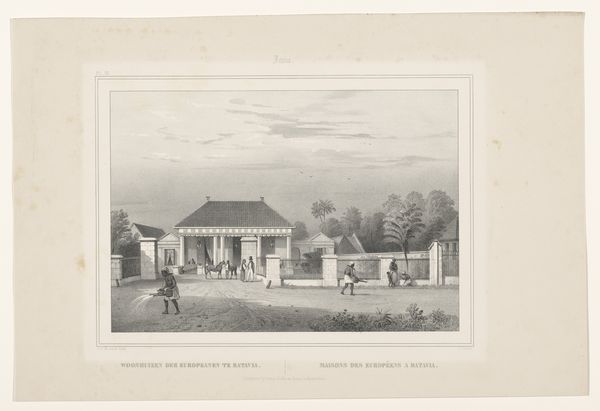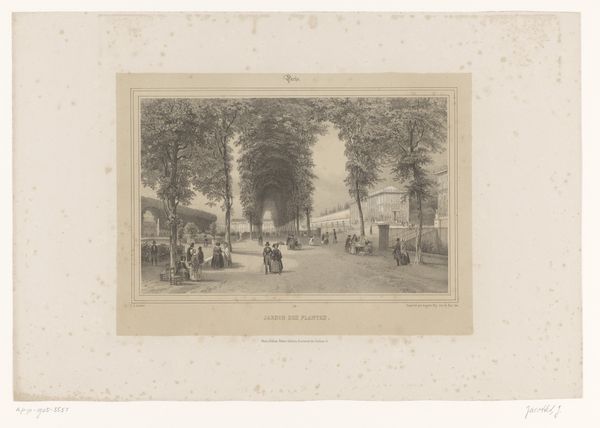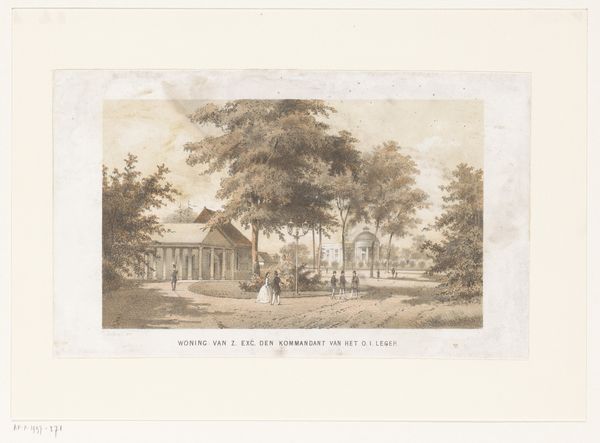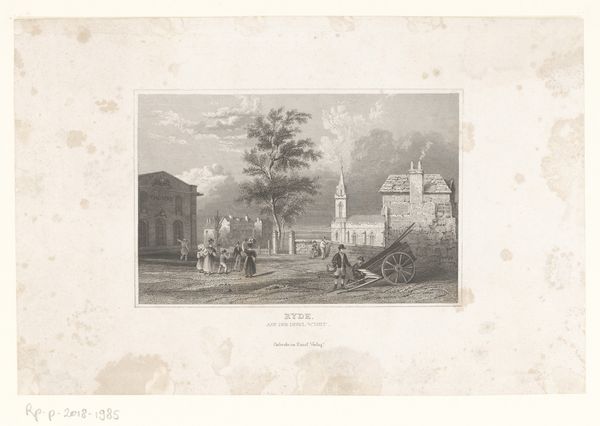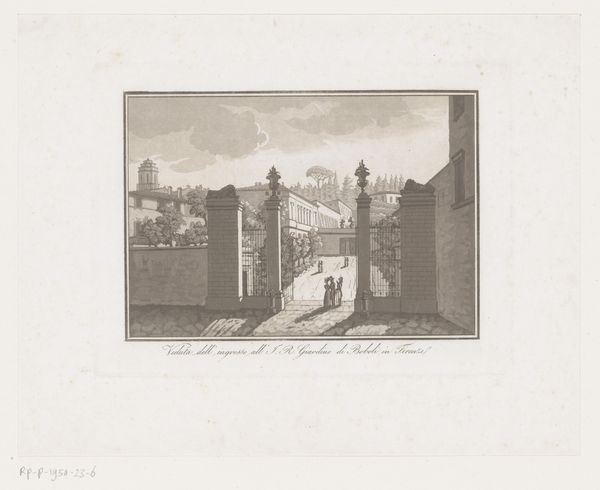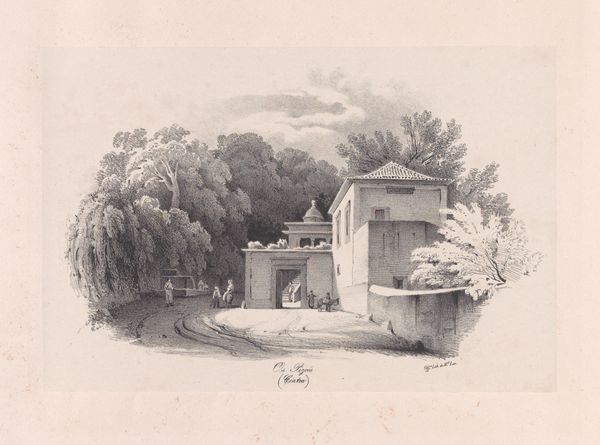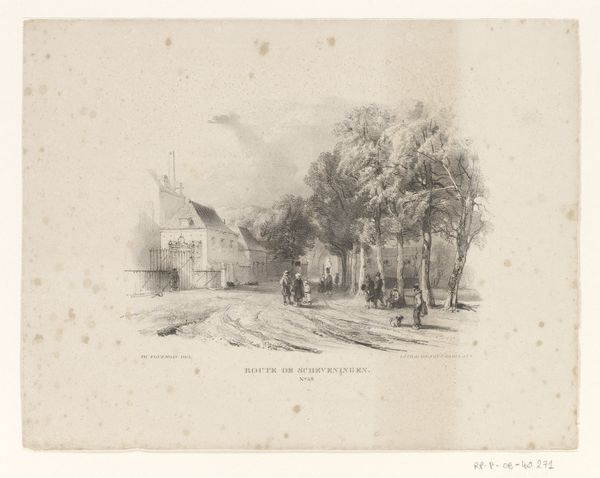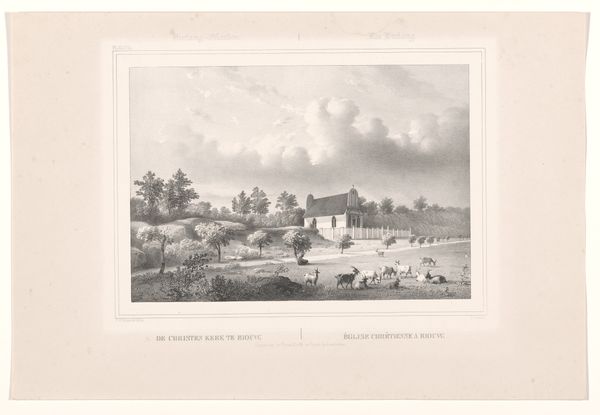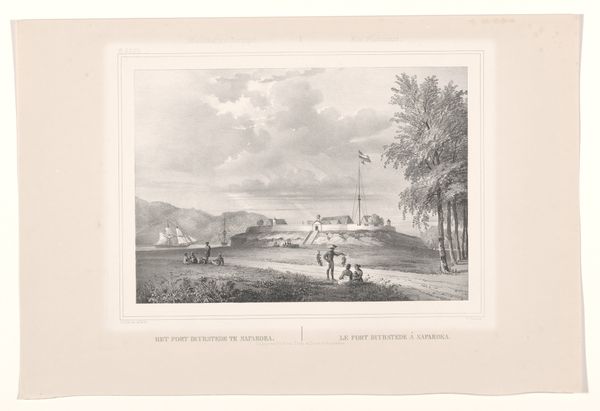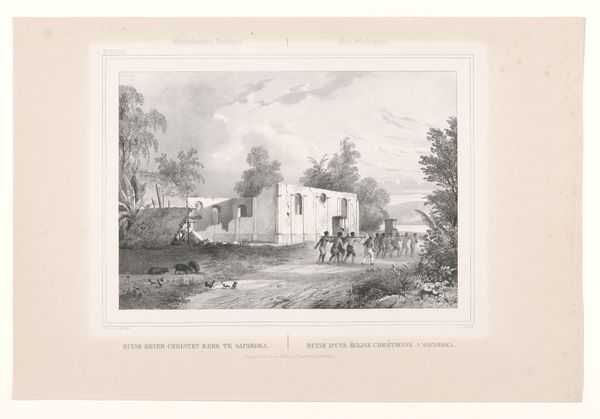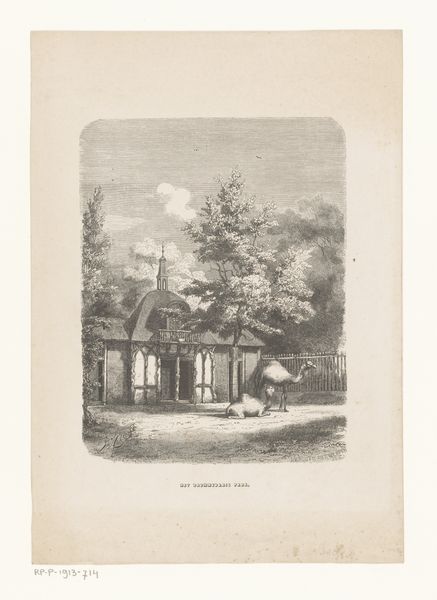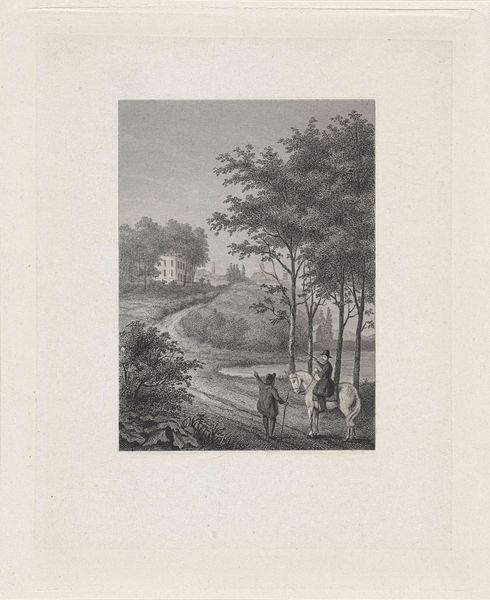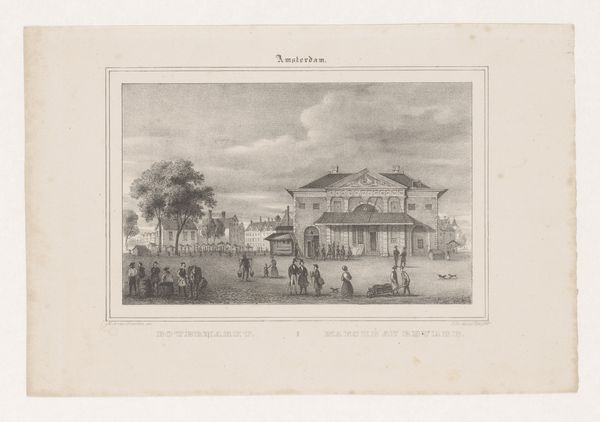
# print
#
landscape
#
orientalism
#
cityscape
Dimensions: height 340 mm, width 510 mm
Copyright: Rijks Museum: Open Domain
Editor: We're looking at "Gezicht op een straat in Amboina," or "View of a Street in Ambon," a print made sometime between 1843 and 1845 by Paulus Lauters. I'm really struck by how this everyday street scene feels almost theatrical, you know? Like a stage set. What draws your eye when you look at it? Curator: It's funny you say theatrical – it reminds me of a memory, a childhood diorama brought to life in shades of grey. For me, it’s all about the light and how it dances on the textures of the buildings, wouldn’t you say? But behind the aesthetics is the Orientalist genre, casting its romantic yet skewed gaze upon the then Dutch East Indies. The figures, seemingly frozen in time, feel… observed. Almost like specimens in a museum. Editor: Yes, I definitely see that. The detached perspective feels a bit unsettling now that you mention it. It’s a cityscape, but a very specific, colonial-era cityscape. Curator: Exactly. And while the picturesque details of daily life draw us in, that nagging awareness of power dynamics complicates our reading, doesn't it? It asks us to see beyond the surface beauty, perhaps? Consider how it shapes our perceptions of the "other". It makes you wonder about the narratives unseen and unheard, doesn't it? Editor: It really does. I initially responded to the aesthetic appeal, but understanding the colonial context adds layers of complexity and unease. It definitely isn’t just a pretty picture. Curator: Precisely. It’s a lens through which to examine history, power, and representation itself, and that's why I keep returning to this piece, to ask it different questions, again and again. Editor: I appreciate your insights. I’ll never look at seemingly "simple" prints the same way. Curator: And that, my friend, is the magic of art!
Comments
No comments
Be the first to comment and join the conversation on the ultimate creative platform.
